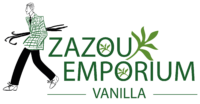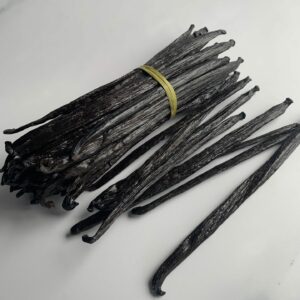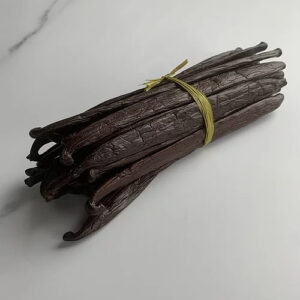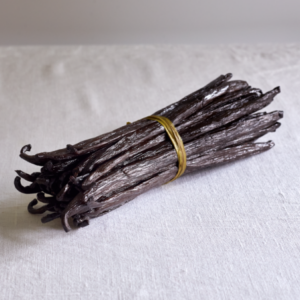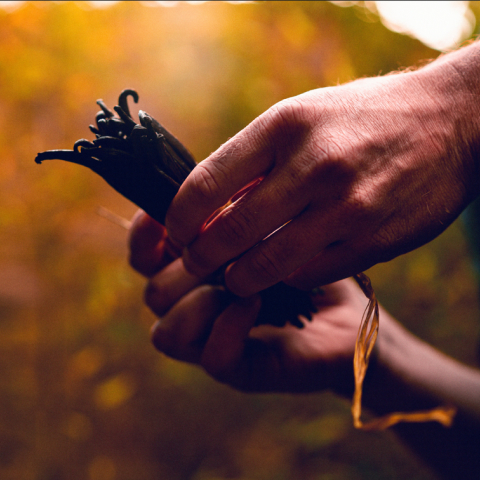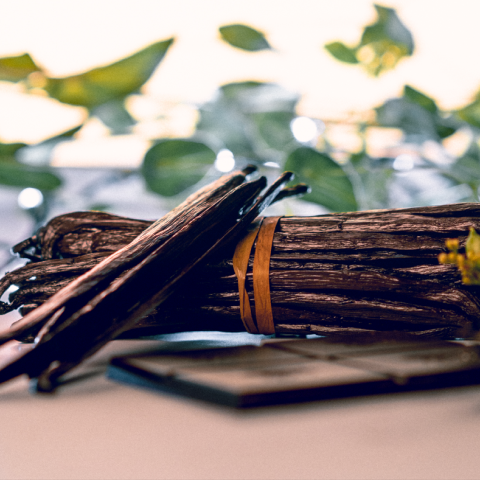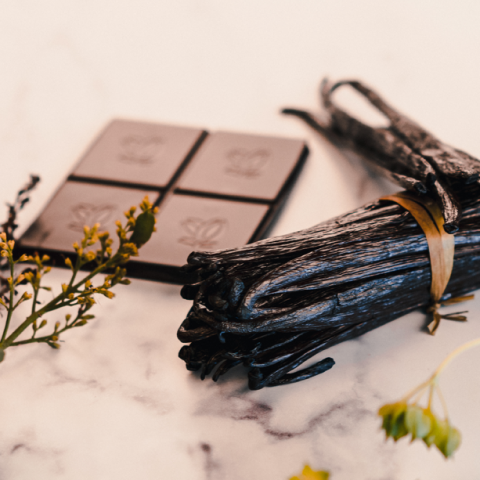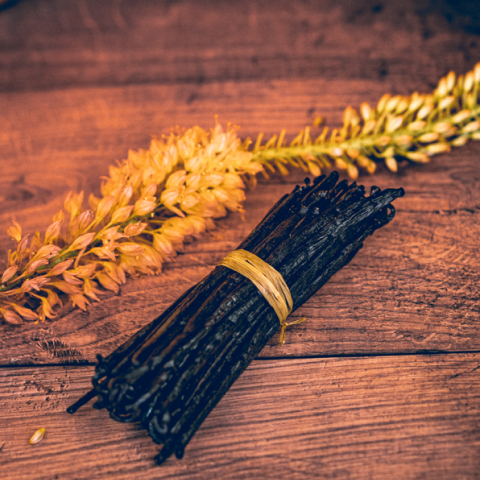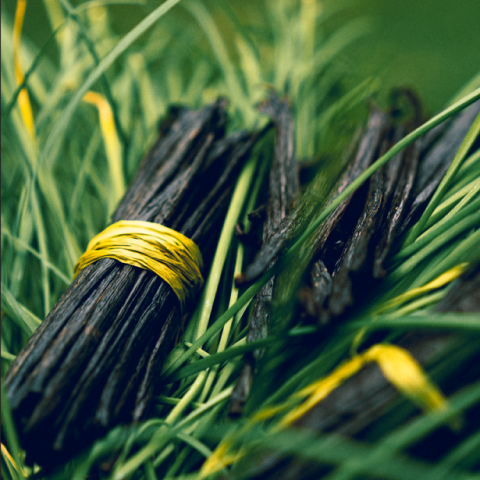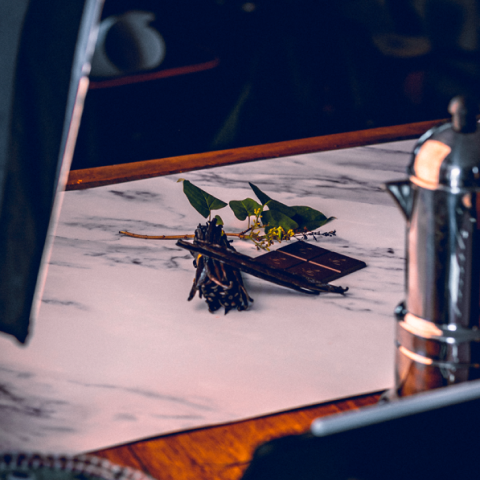Our Vanilla
If you are looking to buy vanilla pods in the UK, then we are here to supply them. Supplying to the catering and wholesale industry, our vanilla pods are ideal to use when baking cakes, making desserts and puddings or any culinary task that requires pure vanilla.
Here is a little run down of the wonderful varieties we currently supply.
The Magic of Vanilla
“Vanilla” a term used to describe things as plain and ordinary, but we assure you that this fantastical spice is anything but that.
An Orchid native to Mexico and first used by the Mayans and the Aztecs thousands of years ago to flavour their precious “Xocolatl” drink. Vanilla was the flavour of royalty and warriors.
When the Spanish conquistadors arrived in the 16th Century and discovered this drink of the heavens, they inevitably brought it back to Europe. Of course they then tried countless ways to grow Vanilla at home and although vines blossomed, none bore fruit.
This was due to the absence of the Melipona Bee, native to South America and the only insect capable of pollinating the Orchid. Production of Vanilla outside its homeland was impossible, or so it seemed…….
Edmund The Great!
Introducing Mr Edmund Albius the 12 year old who created the practical process for the pollination of Vanilla. A feat that had beat Europeans for centuries after its discovery. He was an orphan born on the Island of Bourbon, now known as Reunion. A slave, he lived and worked on the estate of Fereol Bellier-Beaumont.
He spent most of his time following Beaumont around learning about flowers, vegetables and fruits and also a Vanilla vine that had been there for many years. French colonists had brought Vanilla to Reunion for production, but it was as with Europe, an alien to the insects of the island and henceforth pollination did not occur!
In 1841, while walking the grounds Beaumont was amazed to find his barren Vanilla vine suddenly bearing fruit! Edmond told him that he had pollinated the plant himself. Asking for a demonstration, Edmond showed how taking a thin stick or blade of grass and a thumb gesture, pollinated the Vanilla orchid! The Vanilla world was changed in that moment! Edmond travelled the island, teaching others his method. His technique spread to Seychelles, Mauritius and Madagascar, which currently produces 80% of the worlds Vanilla. It is down to Edmund that we are able to enjoy Vanilla and the magic of its flavour all over the world.
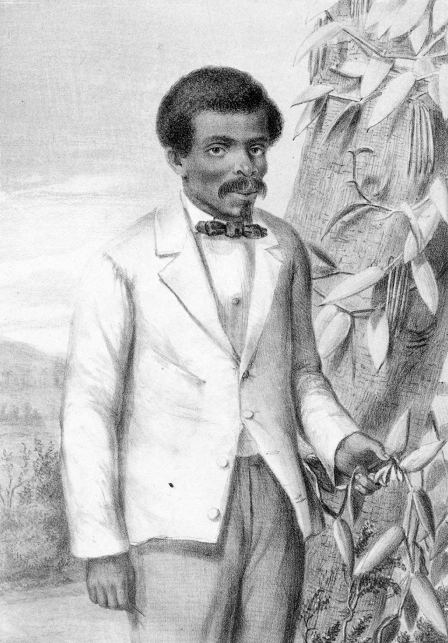
A few facts about the vine
- Vanilla is an Orchid
- It is a hemiepiphyte (uses other plants for support)
- Vanilla Vines can grow up to 20m long
- Vanilla flowers are yellow an of trumpet shape.
- They only flower for one day during a season!
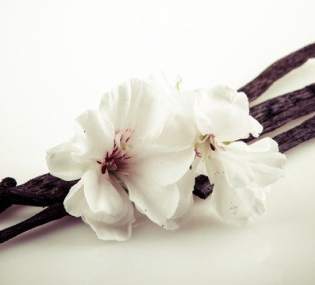
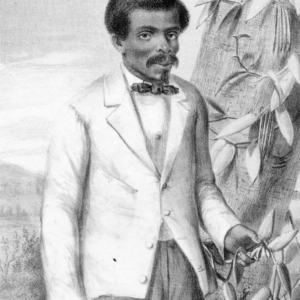
A few facts about the vine
- Vanilla is an Orchid
- It is a hemiepiphyte (uses other plants for support)
- Vanilla Vines can grow up to 20m long
- Vanilla flowers are yellow an of trumpet shape.
- They only flower for one day during a season!
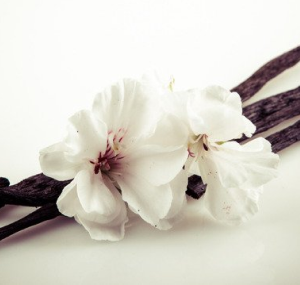
Main Types of Vanilla
In the culinary world there are really onely two main kinds of vanilla

Vanilla Planifolia
The Classic Black Vanilla. Grown in the Indian Ocean, eg. Madagascar, Maurities, Seychelles, Comoros… The aromas and flavours are creamy and woody with a richness and subtle hint of spice. Coupled with its potency and the ease in which the flavours infuse has made it the most popular variety of Vanilla today.
Zazou Planifolia Vanilla: Madagascar, Bali, Uganda, Indian

Vanilla Planifolia
The Classic Black Vanilla. Grown in the Indian Ocean, eg. Madagascar, Maurities, Seychelles, Comoros… The aromas and flavours are creamy and woody with a richness and subtle hint of spice. Coupled with its potency and the ease in which the flavours infuse has made it the most popular variety of Vanilla today.
Zazou Planifolia Vanilla: Madagascar, Bali, Uganda, Indian
Vanilla Tahitensis
The jury is still out on whether this Vanilla was created as a hybrid by the ancient people or via natural selection. However, it is a cross between Planifolia and Vanilla Odorata and occurred in Mayan Cacao Forests. Tahitensis is subtly sweet, floral and aniseedy. I delicateness of flavour is a huge hit with pastry chefs around the world.
Zazou Tahitensis Vanilla: Papua New Guinea, Tahitian, Indian Tahitensis.
The name “Bourbon” Vanilla was created to identify all vanilla that came from a region in Madagascar, formerly called Reunion. Today we know that if Vanilla is labelled “Bourbon” it is Madagascan.
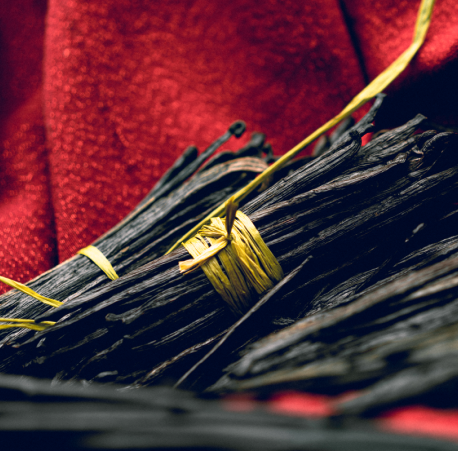
Vanilla Tahitensis
The jury is still out on whether this Vanilla was created as a hybrid by the ancient people or via natural selection. However, it is a cross between Planifolia and Vanilla Odorata and occurred in Mayan Cacao Forests. Tahitensis is subtly sweet, floral and aniseedy. I delicateness of flavour is a huge hit with pastry chefs around the world.
Zazou Tahitensis Vanilla: Papua New Guinea, Tahitian, Indian Tahitensis.
The name “Bourbon” Vanilla was created to identify all vanilla that came from a region in Madagascar, formerly called Reunion. Today we know that if Vanilla is labelled “Bourbon” it is Madagascan.

Growing and harvesting vanilla
Madagascar Vanilla requires a high level of expertise and is separated into 6 Main Stages!
Growing and harvesting vanilla
Madagascar Vanilla requires a high level of expertise and is separated into 6 Main Stages!
